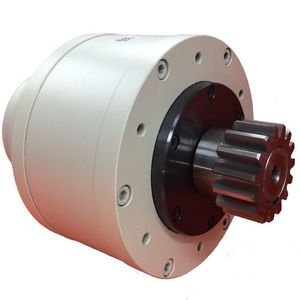Brakes play an essential role in most industrial machines.
How Brakes Work
Many different types of brakes exist, but they all provide the same function: to slow down or stop movement. Brakes use friction to halt rotating inertia loads and to hold movable parts in place when required. They convert kinetic energy, produced through the friction between two surfaces, into heat to slow something down.
The two main brake types are holding brakes and dynamic brakes. Holding brakes secure components into a stopped position while dynamic brakes slow down a rotating inertia load. Generally, dynamic brakes need more power than holding brakes because they must slow down heavy, rotating components where often holding brakes only need to keep an already stopped part in the same position.
Methods of Brake Actuation
Dynamic and holding brakes are typically classified by the method of actuation which include mechanical, electric, hydraulic and pneumatic.
Types of Industrial Brakes
Machinery and industrial equipment typically use three main types of brakes
1. Spring Applied Brakes
Brakes that decelerate moving loads or hold static loads still if the release mechanism turns off are typically spring-applied brakes. These brakes use electromagnetic solenoids as its release mechanisms and are most useful for overhead crane or winch holding, general industrial machines and emergency stops.
2. Fail Safe Brakes
 As the namesuggests, fail safe brakes are used to stop motion in the case of power loss or an issue with the PLC or variable frequency drive. Commonly used in downhill and overland conveyor belt systems, oil and mining winches, crane hoists, steel mill coiling and rolling systems, drawbridges and elevators.
As the namesuggests, fail safe brakes are used to stop motion in the case of power loss or an issue with the PLC or variable frequency drive. Commonly used in downhill and overland conveyor belt systems, oil and mining winches, crane hoists, steel mill coiling and rolling systems, drawbridges and elevators.
3. Hydraulic Release Brakes
Hydraulic release brakes are another type of spring-applied drum brake that uses hydraulic power for adjustable braking torque. This type of brake is most useful for winch holding, stage productions and emergency stops.
4. Pneumatic Brakes
Also known as air brakes, they deliver quick actuation and stopping times that are a necessity in emergency situation or to stop large industrial machines for routine maintenance. They are actuated with compressed air rather than hydraulic fluid or oil.
How to Get the Most Life Out of Your Brake Components
Getting the most life out of your industrial brakes takes consistent effort, but with routine inspection, they will last much longer.
1. Level installation
It seems obvious but precise levelling of your machinery will ensure that things run smoothly. Even wear on brakes is optimal for maximum use.
2. Change the oil
Brakes relying on hydraulics for actuation need their hydraulic oil cleaned regularly. The oil gets contaminated with dust, condensed water, heat and grit. Changing the oil, the filters and regularly checking levels will help avoid costly repairs and downtime.
3. Load Regulation
Overfilling the machine or unevenly distributing loads strains equipment. This can cause uneven wear on brakes or complete brake failure.
